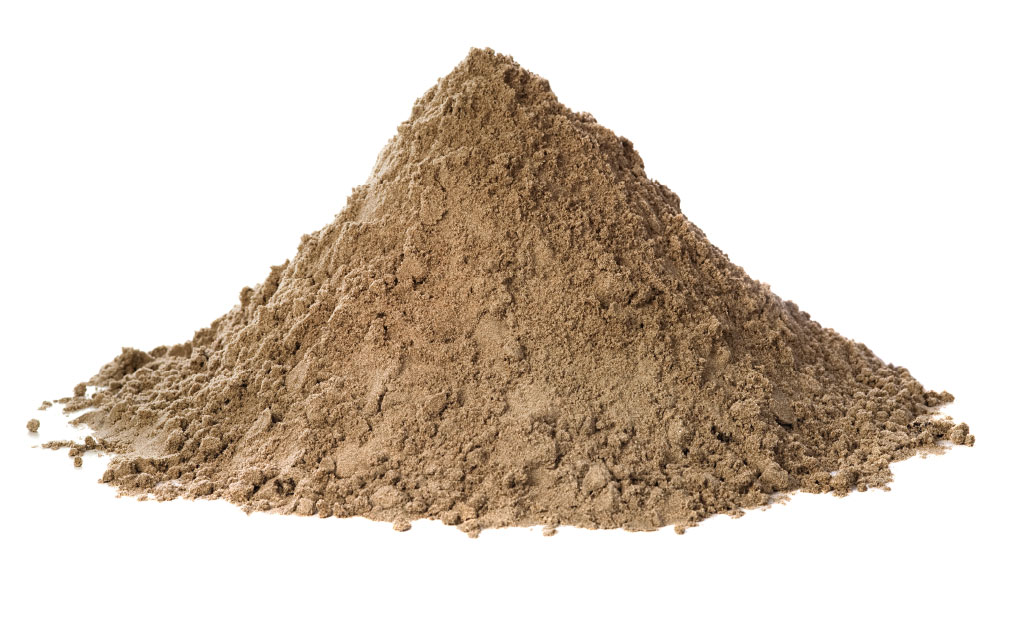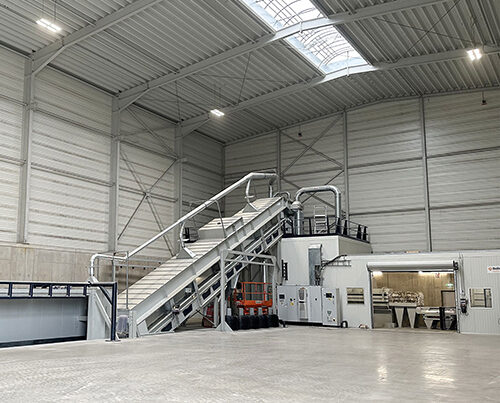A warning issued by the United Nations Environment Programme
We all have the same picture in our minds when we think of our world’s many beaches and deserts: miles and miles of sand stretching in every direction. In fact, around 35 percent of the Earth’s surface is covered in sand – and this area is getting bigger not smaller. So surely at least this raw material is in abundance? Unfortunately, however strange it may sound, it isn’t. So what is behind the latest bad tidings that supplies of this material are getting dangerously low – something that even the United Nations Environment Programme (UNEP) is taking a closer look at? And more importantly: what can we do to turn the tide?

Sand – the ‘Jack of all trades’
Sand is not simply sand. On the contrary, there are many different types with each having its own individual properties. And it is these properties that determine how and when it can be used. Sand from rivers, lakes and seas is fractured, uneven and angular making it a suitable aggregate for the construction industry. In fact, this sector has the highest demand overall with two-thirds of concrete being made up of sand.
Whilst we may indeed be surrounded by sand, the quantities of construction sand are becoming increasingly scarce.
In contrast, desert sand is smooth and rounded as a result of being so exposed to the elements. This material is, therefore, not an option for the building sector as the cement would not be able to stick and the higher salt content reduces its half-life. And this is where the problem lies. Whilst we may indeed be surrounded by sand, the quantities of construction sand are becoming increasingly scarce. Sand is not only important for building roads, embankments and houses. It is used in well and drinking water filters, is the main material (quartz sand) for producing glass and is important for making toothpaste, detergents, paper and cosmetics. As it contains silicon, sand is needed for high-tech products and can be found in solar cells and computer chips. Being such a versatile raw material, sand truly is a ‘Jack of all trades’.
Consumption of sand – a few facts & figures
- 15bn tonnes are extracted from land & water around the world every year
- 200 tonnes of sand can be found in every detached home
- 3,000 tonnes are needed to build a block of flats or a hospital
- 4.7 tonnes are consumed on average per person per year in Germany (Singapore heads the list: 5.4 t/inh.), 80% of which is used to build houses, roads & bridges
- 240m tonnes of sand & gravel are mined in Germany every year 10m tonnes of this is quartz sand
- 30,000 tonnes of sand are needed to build a single kilometre of a six-lane motorway – every year, China builds roads stretching 146,000 kilometres

Building on sand
It is precisely because it is so versatile that sand is now the most overexploited raw material in the world after water. The main reason for this is the global building boom, in particular in Asia. China alone consumes around 60 percent of all sand and gravel mined around the globe. Within just three years, it has processed more sand than the USA in a whole century. Singapore, the smallest country in south-east Asia (in terms of surface area), is quite literally built on sand. This city state, whose population has tripled over the last 50 years, has increased its surface area by 20 percent since the beginning of the 70s by expanding its coastline with sand – and it plans to reclaim more land. Dubai began building its Palm Islands back in 2001 and has, to date, used around 640 million tonnes of sand and stone just for this project. This sand has not come from its own desert but has been imported from Australia. A lucrative business for Australia as it brings in around 5 billion dollars every year.
Sand is being mined regardless of the consequences
Germany primarily uses sand from the sea to protect its coastline, the most well-known example here being the Island of Sylt. Some countries, such as Cambodia, India, Indonesia and Morocco, have restricted or even banned the mining of sand but these regulations are, for the most part, completely ignored. Sand is simply being removed with no thought whatsoever about the long-term impact. This careless attitude has led to some very serious political and envir-onmental consequences: two dozen small islands in Indonesia have fallen victim to this massive extraction rate and simply ceased to exist. 50% of the beaches along Morocco’s coastline have disappeared over the last few years. All that is left is bare rock. Huge craters up to 10 metres deep are appearing on the sea bed as massive dredgers remove up to 400,000 cubic metres of sand every single day. This process stirs up the sediment (and all the living creatures in it), removes it and destroys the ecosystem vital to so many microorganisms and animals. Fishing communities, which are so dependent on these biospheres, are no longer able to support themselves.
From dwindling supplies of sand to the materials of the future
Whilst the situation here in Germany may not be as precarious as elsewhere around the world, action still needs to be taken. We cannot simply ignore the negative impact that these mining activities are having on our environment or the fact that we consume far more sand than nature can produce. What alternatives are there to sand though? What direction do we need to head in when it comes, for example, to thinking about renewable or innovative building materials? What options are available to recycle sand and concrete?
Looking for answers
To find out the answers, we put these questions to Dr Rudolf Diegel from REMEX GmbH, a company that specialises in processing and recycling construction and mineral waste and in producing recycled aggregate. Go to the “Latest News” section to read the full interview.
Image credits: image 1: iStock: gmutlu; image 2: plainpicture: Mint Images; image 3: iStock: craftvision












